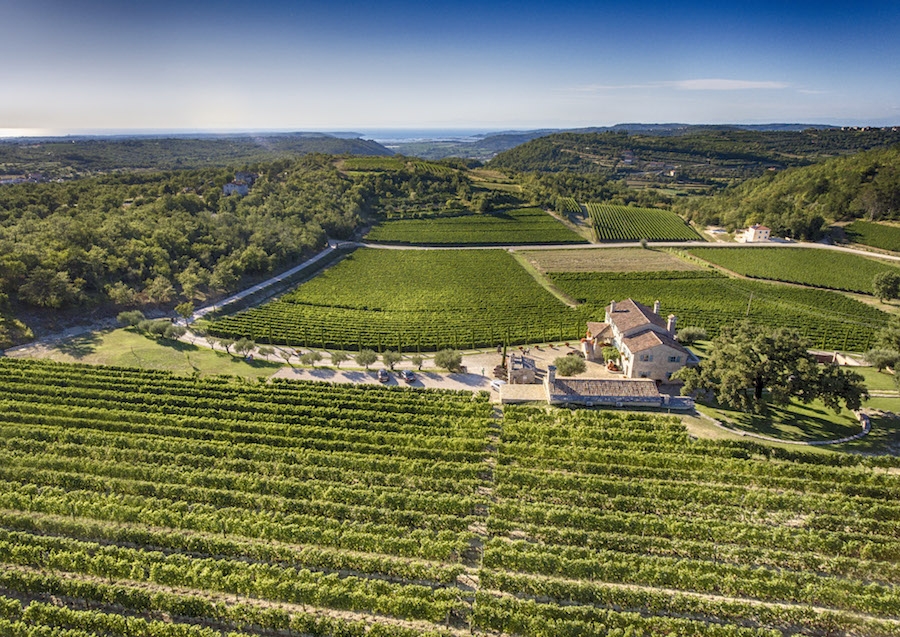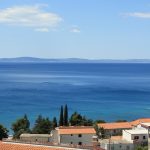
This year the award Traditional Wine Maker of the Year was given to the Kabola winery in Momjan
Innovation, design, gastronomic excellence, superior service, well prepared marketing and branding, uniqueness and location, are criteria used by The Luxury Travel Guide to choose candidates for an award given to exclusive tourism properties in Europe, America, Australia, Asia, Africa and Middle East. This year the award Traditional Wine Maker of the Year was given to the Kabola winery in Momjan. Just the photographs of the wonderful building surrounded by vineyards show us why, and time spent in the winery lingers for a long time. Due to the always merry and charming host Marino Markežić, but also his wines.
Kabola, the family nickname he used for the winery, and now everyone knows him by it, entered the history of Croatian winemaking as the first to produce and market wine from amphorae. It was a Malvazija from 2005. Until 2010 each year he placed the grapes of the most significant Istrian variety to soak for months in must in a clay container buried in the ground behind the house. Only in the spring he would press it all and place in a wooden barrel to nurture the wine on fine residue, leaving it another half a year to settle down in the bottle. For several years he did not make amphorae wines, and in 2015 and 2016 he made two per year. Besides Malvazija, he also began to use Teran.
The Terans of Kabola winery were a special story even before. An exceptional pleasure came from the 007 harvest. The nine-year-old wine was incredibly fresh and young upon opening, and after decanting presented a wonderful fruitiness. It proved to be a large wine for a large glass and it was, like many excellent Terans enjoyed last year, a strong incentive in the then uncertain struggle to return legitimacy to Croatian Teran which the neighbouring Slovenians tried to seize for unknown reasons.
Kabola is also to be credited for the protected geographic origin of the Momjan Muscat. According to some findings, 800 years ago vines of a white Muscat came to Momjan from Italian Friuli. They adapted to the people, climate and soil and the variety was later known as Momjan Muscat, and Momjan winemakers Kozlović, Prelac, Sinković, Brajko and Markežić do present themselves as muscateers.
Kabola has three excellent Momjan Muscats. Secco is a dry, scented wine that goes well with fresh cheeses, warm seafood appetizers and white meat dishes. Wines labelled Momjan Muscat border between semi-sweet and sweet and are served as an aperitif or with sweets, and Dolce has 201 grams of sugar residue per litre. Does anything more need to be said? It goes well with a good ice-cream.
Kabola cultivates 20 hectares of vineyards and produces around 100.000 litres of wine per year. 70 percent of it is Istrian Malvazija. Like the Muscat, he offers it in three versions – as young and fresh under the name of the variety; then Unica, a sort of precursor to amphorae, the third and most ambitious Malvazija.
He made Unica from 2003 through several months of maceration in wooden tubs, then with yeasts in barrels. This is how he later began to create Amfora, and Unica is macerated for a few days, then kept for a long time on fine residue. Malvazija is also a base for the sparkling Re which also contains Chardonnay and Pinot. His love for serious wines can be seen in the Merlot and Cabernet Sauvignon aged for a year and a half in wood, and Kabola says of this preference:
“When I was younger, I enjoyed young, fresh wines and loved younger women. Now I love serious women and complex wines!”
For the original and more from Vino.hr blog on wine, click here.









